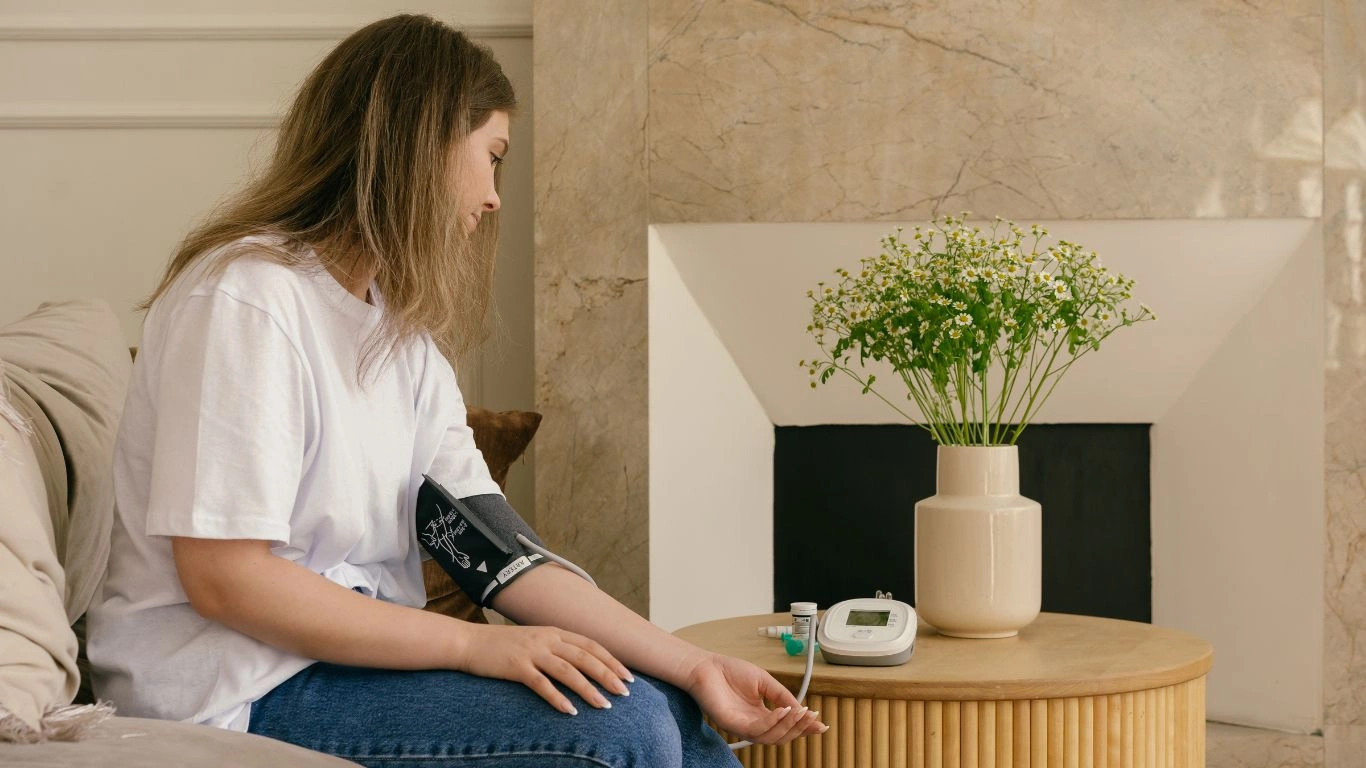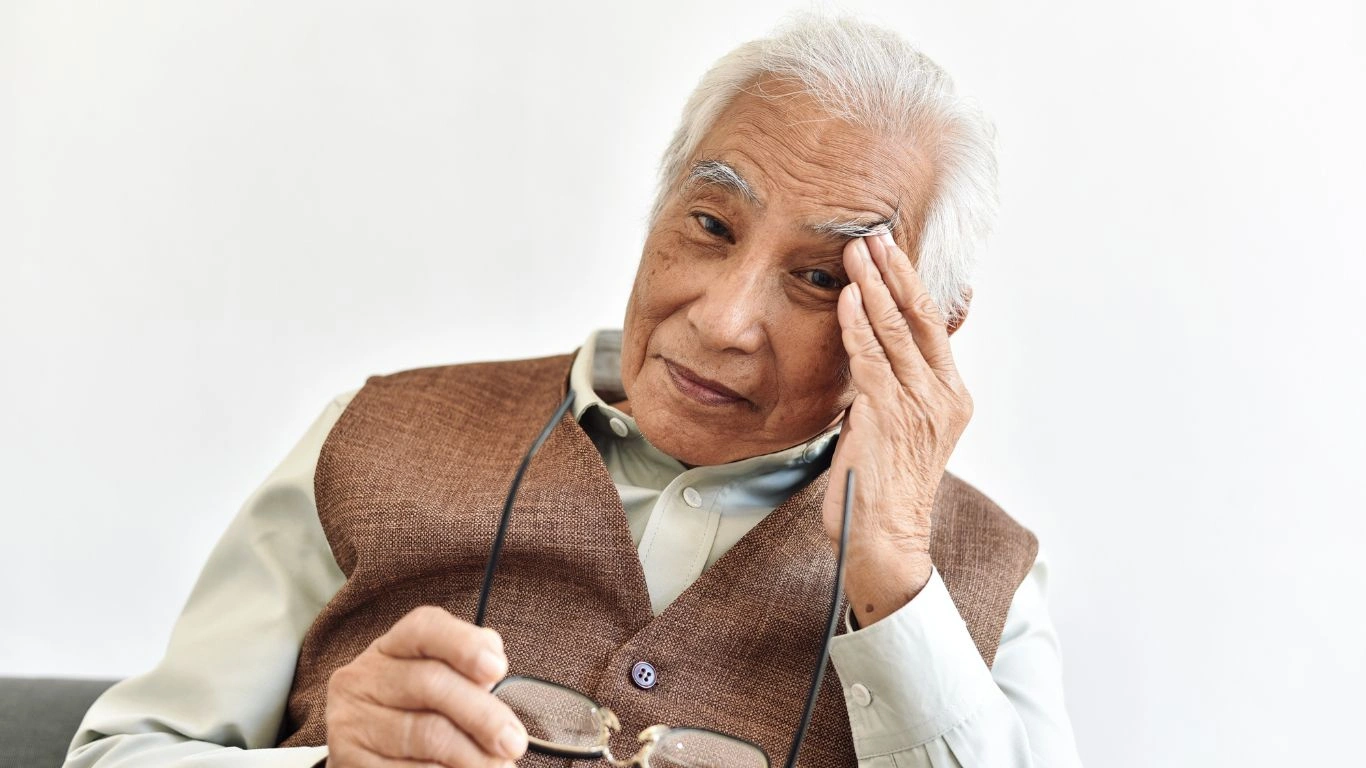How Daily Stretching Lowers Blood Pressure Naturally: Easy & Effective Method
As an Internal Medicine Physician with a focus on Hypertension Management, I’ve spent years helping patients manage their blood pressure through medication, lifestyle changes, and routine check-ups. But one method that often gets overlooked in the rush to manage hypertension is a simple yet incredibly effective one: stretching. In this article, I’ll explore how daily stretching lowers blood pressure and why it should be an essential part of any hypertension management plan. Trust me, this is one technique you don’t want to overlook, and I’m excited to share how it’s made a difference in my practice—and even my own life.
The Science Behind Stretching and Blood Pressure
If you’re anything like my patients, the idea of stretching might sound like something you do before a workout or just to relieve a bit of tension after a long day at the desk. But there’s a growing body of research showing that stretching doesn’t just feel good—it can actually help lower your blood pressure. But how? Let’s break it down.

Why Stretching Works to Lower Blood Pressure
Stretching triggers a number of physiological changes in the body that can have a direct impact on lowering blood pressure. When you stretch, your muscles relax, your heart rate stabilizes, and your blood vessels dilate. This dilation of blood vessels allows for smoother blood flow, which in turn lowers the amount of pressure the heart needs to exert to pump blood. Think of it like unclogging a pipe to allow water to flow more freely—your cardiovascular system works the same way.
Additionally, stretching can activate your parasympathetic nervous system, which is responsible for the body’s relaxation response. This is important because the parasympathetic nervous system counteracts the effects of stress, one of the major contributors to high blood pressure. As your body enters a state of relaxation, your heart rate slows, and your blood pressure naturally decreases.
Personal Experience: Seeing Results with Patients
In my practice, I’ve seen firsthand how patients who incorporate stretching into their daily routines often experience significant improvements in their blood pressure. One of my long-term patients, who struggled with hypertension for years, added a 10-minute stretching routine to her morning and evening schedule. Within just a few weeks, her blood pressure readings consistently dropped, and she felt better overall—less stressed and more energized. I’m not saying stretching is a miracle cure, but it’s definitely an important tool in the toolbox of blood pressure management.
Common Stretching Techniques for Lowering Blood Pressure
Now that you understand the science behind it, let’s talk about which stretches are the most beneficial for lowering blood pressure. You don’t need to become a yoga expert or spend hours a day on flexibility training (unless you want to, of course!), but there are a few key stretches that can make a noticeable difference.

1. Neck and Shoulder Stretches
We all carry tension in our neck and shoulders, especially with long hours at a desk or behind the wheel. Tension here can contribute to elevated blood pressure, as it triggers a stress response in the body. A simple neck and shoulder stretch can go a long way toward relieving this tension. I recommend gently tilting your head from side to side, holding each position for 15-30 seconds, followed by shoulder rolls. These stretches help relax the muscles in your neck, shoulders, and upper back, reducing overall stress and blood pressure.
2. Standing Forward Bend
Another stretch I often recommend is the standing forward bend. This stretch targets the hamstrings and lower back while calming the nervous system. To perform this stretch, stand with your feet hip-width apart, slowly bend forward at the waist, and let your head and neck relax toward the ground. If your flexibility allows, touch your toes, but don’t worry if you can’t. Just go as far as you’re comfortable, and hold the stretch for 30 seconds. This position encourages deep breathing and relaxation, both of which are key to lowering blood pressure.
3. Child’s Pose
For many of my patients who experience high blood pressure due to stress, I highly recommend incorporating Child’s Pose into their daily routine. It’s a gentle stretch for the lower back, hips, and thighs, and it also promotes relaxation by encouraging deep, slow breaths. To do it, start by kneeling on the floor with your big toes together and knees apart. Sit back onto your heels, then slowly extend your arms forward on the ground and lower your forehead to the floor. Hold for 30 seconds to one minute, focusing on your breath.
The Connection Between Stress, Stretching, and Hypertension
One of the most overlooked aspects of managing high blood pressure is managing stress. Stress is a major contributor to elevated blood pressure, and stretching is one of the easiest ways to combat that. I’ve seen countless patients who, after adding stretching into their daily routine, report feeling much more relaxed. They’re able to better handle stress, which in turn helps manage their blood pressure more effectively.

Stretching for Stress Relief: More Than Just Blood Pressure
It’s no secret that chronic stress can wreak havoc on your health. It can raise your blood pressure, contribute to heart disease, and even affect your mental well-being. The good news is that stretching offers more than just physical benefits—it helps to calm your mind, too. This dual action is why I recommend stretching not just for physical health, but also for mental clarity and emotional balance. When your mind is calm and your body is relaxed, your blood pressure naturally follows suit.
Incorporating stretching into your daily routine doesn’t have to be complicated or time-consuming. Just a few minutes a day can make a world of difference. So, whether you’re working with a doctor to manage hypertension or just looking for ways to improve your overall well-being, daily stretching should definitely be on your radar. In the next section, I’ll dive deeper into some of the more advanced stretching techniques and how they can further benefit your blood pressure—and your health in general.
Advanced Stretching Techniques for Blood Pressure Reduction
While the basic stretches I covered in Part 1 can be incredibly effective at lowering blood pressure, there are also more advanced stretching techniques that can provide even greater benefits. These methods not only target flexibility and relaxation, but also focus on deepening the connection between the mind and body. As I’ve worked with patients over the years, I’ve found that incorporating these techniques can sometimes make a big difference, especially for those with stubborn hypertension that doesn’t respond to basic methods.

4. Yoga and Its Impact on Blood Pressure
Yoga is a fantastic practice that combines physical stretching with breathwork and mindfulness. As someone who has seen how well yoga works for patients with high blood pressure, I’m always amazed at the results. When you practice yoga, you’re not just stretching your muscles; you’re also learning to control your breathing, which is key for managing stress. Yoga poses like Downward Dog, Cat-Cow, and Tree Pose can help improve your flexibility, balance, and circulation—all of which contribute to lower blood pressure.
But it’s not just about the physical aspect of yoga. The deep, controlled breathing that comes with yoga is something I can’t recommend enough for anyone managing hypertension. By slowing down your breath and focusing on inhaling deeply and exhaling slowly, you’re stimulating your parasympathetic nervous system, which is the body’s rest-and-digest mode. This triggers a relaxation response, reduces stress, and ultimately lowers blood pressure.
5. Deep Breathing and Stretching Combination
Another powerful technique that I’ve seen work wonders for patients is combining deep breathing with stretching. This method allows you to maximize the benefits of both stretching and breathing, which work synergistically to help lower blood pressure. A simple technique I suggest is to inhale deeply as you stretch, holding your breath briefly, and then exhale slowly as you release the stretch. This combination helps your body relax more fully and improves oxygen flow to your tissues, which supports better overall heart health.
One of the easiest stretches to pair with deep breathing is the seated forward bend. Start by sitting on the floor with your legs stretched out in front of you. Inhale as you lengthen your spine, then as you exhale, slowly fold forward, reaching for your toes. Hold this position while you breathe slowly and deeply, letting each exhale deepen the stretch and encourage relaxation. This exercise helps to release tension in the lower back and legs, but the real magic happens in the breath, as it allows your body to enter a more relaxed state.
The Role of Consistency in Stretching for Blood Pressure
One of the most important things to understand when using stretching to lower blood pressure is that consistency is key. A one-off stretch or a single yoga session won’t have the lasting effects you’re looking for. Just like any other form of exercise or wellness practice, you need to make stretching a daily habit to truly experience the benefits.

Daily Stretching Routine: How to Make It Part of Your Life
In my practice, I encourage my patients to start small when integrating stretching into their daily routine. For some, 10-15 minutes a day is all it takes to see a noticeable improvement in their blood pressure. The goal is to make stretching a habit—something you do at the same time each day so that it becomes an automatic part of your routine.
For example, try stretching first thing in the morning to start your day on a calm note, or incorporate it into your evening routine to unwind before bed. If you’re not sure where to start, I recommend focusing on some of the stretches I’ve already mentioned—such as neck rolls, shoulder stretches, or a few yoga poses. The key is to be consistent, and don’t be afraid to experiment with different stretches to see which ones work best for you.
Tracking Your Progress
When it comes to managing hypertension, it’s essential to track your progress, especially when adding a new technique like stretching to your routine. Keeping track of your blood pressure readings is a great way to see the tangible benefits of stretching over time. I’ve had patients who were initially skeptical about stretching, but once they began tracking their blood pressure and noticed improvements, they were hooked.
In addition to monitoring your blood pressure, pay attention to how you feel after stretching. Do you feel more relaxed? Have your energy levels improved? Is your mood more stable throughout the day? These are all signs that your stretching routine is working to lower your blood pressure and improve your overall well-being.
Stretching and Lifestyle: A Holistic Approach to Hypertension
It’s also important to remember that stretching is just one piece of the puzzle when it comes to managing high blood pressure. While it can make a significant difference, it should be combined with other lifestyle changes, such as a healthy diet, regular exercise, adequate sleep, and stress management. Together, these factors work in harmony to help keep your blood pressure in a healthy range.

Stretching as Part of a Comprehensive Hypertension Plan
As a physician, I always take a holistic approach when helping my patients manage their hypertension. Stretching isn’t a standalone solution, but when combined with other healthy habits, it can be a powerful tool. For example, if you’re also following a low-sodium diet, engaging in regular cardiovascular exercise, and practicing mindfulness, adding stretching to your daily routine can further enhance these efforts and provide better results.
Ultimately, the goal is to create a lifestyle that supports long-term heart health, and stretching is an easy, low-cost way to do that. It doesn’t require any special equipment or a gym membership, and it can be done anywhere—whether at home, at the office, or even in the park. The flexibility of stretching makes it an accessible and valuable tool for anyone looking to manage their blood pressure more effectively.
In the next part of this article, we’ll explore more specific strategies for incorporating stretching into your daily routine and overcoming common barriers people face when trying to stay consistent with this practice. Stay tuned for more tips and insights!
Overcoming Barriers to Daily Stretching
In the previous sections, we’ve covered why stretching can be so effective in managing high blood pressure, and I’ve shared some helpful techniques to get you started. But now, I want to address a common question I hear from patients: “How do I stay consistent with stretching?” Believe me, I get it. With busy lives, stress, and endless commitments, finding the time and energy to stretch every day can feel like a real challenge. But it’s not impossible, and I’m here to offer some practical tips that have helped both me and my patients make stretching a regular part of our routines.

1. Make It Part of Your Morning Routine
If you’re struggling with consistency, a great place to start is incorporating stretching into your morning routine. This has been a game-changer for me personally, and I’ve seen it work wonders for many of my patients. Morning stretching can set the tone for your entire day—it wakes up your muscles, gets your blood flowing, and sets a calm, centered mindset before you dive into the daily grind. If you wake up a few minutes earlier and begin with simple stretches like neck rolls or a seated forward bend, you’ll be amazed at how much more relaxed and energized you feel throughout the day. Plus, by doing it first thing, you can check it off your list before life gets in the way.
2. Use Technology to Stay on Track
If you’re the type of person who struggles to remember things (I know I do!), using technology can help keep you on track. There are countless apps and online resources that offer guided stretching routines tailored to blood pressure reduction and overall wellness. Many of these apps send reminders throughout the day, which can help keep you motivated. Another option is using YouTube videos—there are some fantastic stretch routines specifically designed to target hypertension. If you’ve never used a stretch app before, I encourage you to give it a try. Having a reminder and a set routine can really make a difference.
3. Stretching During Breaks at Work
If you work a desk job like I do, then you’re likely familiar with the stiff neck, tight shoulders, and low back pain that often come with sitting for long hours. This is where incorporating stretches during your breaks can really help. Instead of grabbing a coffee or scrolling through your phone during your break, try standing up and doing a few simple stretches. Even just 5 minutes of stretching can relieve tension, boost circulation, and lower your stress levels. I recommend stretches that you can do standing up or sitting in your chair, such as shoulder rolls, neck stretches, or even a seated spinal twist. These mini-stretch sessions can add up over time and have a cumulative effect on lowering your blood pressure.
4. Make Stretching Enjoyable
It’s easier to stick with any new habit when it’s something you enjoy, so try to make stretching fun! Whether that means listening to your favorite music, watching a short TV show, or practicing mindfulness while you stretch, the more you enjoy the process, the more likely you are to stick with it. Over time, stretching can become something you look forward to, rather than another “task” on your to-do list. Personally, I’ve found that stretching while listening to calming music or practicing deep breathing really helps me connect with my body and clear my mind. And trust me, that mental clarity can have just as much of an impact on your blood pressure as the physical benefits!
How Stretching Fits into a Holistic Blood Pressure Management Plan
It’s essential to remember that stretching is just one part of a broader approach to managing high blood pressure. As I’ve mentioned throughout this article, lifestyle factors like diet, exercise, and stress management are all crucial elements of a comprehensive blood pressure management plan. Stretching alone won’t work miracles, but when combined with other healthy habits, it can be a powerful ally in your fight against hypertension.

1. A Heart-Healthy Diet
In my practice, I always emphasize the importance of a heart-healthy diet in lowering blood pressure. A diet rich in fruits, vegetables, whole grains, and lean proteins provides your body with the nutrients it needs to support healthy blood vessels and heart function. The DASH (Dietary Approaches to Stop Hypertension) diet, for example, is specifically designed to help lower blood pressure. It’s not about drastic changes, but small, sustainable improvements that work in tandem with other lifestyle modifications, like stretching, to improve your health.
2. Regular Cardiovascular Exercise
Exercise is another key component of blood pressure management. Engaging in regular aerobic activity, like walking, jogging, swimming, or cycling, strengthens your heart and improves your circulation. I recommend at least 30 minutes of moderate exercise most days of the week. Of course, stretching complements this perfectly by improving your flexibility and helping your muscles recover from exercise, but it shouldn’t replace the cardiovascular exercise needed to maintain heart health.
3. Stress Management and Sleep
In addition to physical activity, managing stress and getting enough sleep are both critical for lowering blood pressure. In fact, poor sleep and chronic stress are two of the biggest contributors to high blood pressure. Stretching plays a role in reducing stress by activating the parasympathetic nervous system, which helps the body relax. I’ve seen firsthand how deep breathing and mindful stretching can make a huge difference in my patients’ stress levels. But don’t forget about other relaxation techniques—things like meditation, progressive muscle relaxation, or even just taking a few moments for deep breathing can further help to balance your blood pressure.
References and Resources
If you’d like to dive deeper into the topic of stretching and blood pressure, here are some trusted resources and references you can check out:
Disclaimer
Always consult your healthcare provider before starting any new exercise program or making significant lifestyle changes, especially if you have pre-existing health conditions like hypertension or heart disease. The information in this article is for educational purposes only and should not be taken as medical advice. Your healthcare provider can help you create a personalized plan that’s right for you.
Stretching is a simple yet powerful tool in managing high blood pressure. By incorporating it into your daily routine, you’re taking an important step toward better heart health. Whether you start small or go all in with a comprehensive approach, remember that consistency is key. Over time, these small efforts will pay off, leading to better blood pressure and a healthier you!

Dr. Gwenna Aazee is a board-certified Internal Medicine Physician with a special focus on hypertension management, chronic disease prevention, and patient education. With years of experience in both clinical practice and medical writing, she’s passionate about turning evidence-based medicine into accessible, actionable advice. Through her work at Healthusias.com, Dr. Aazee empowers readers to take charge of their health with confidence and clarity. Off the clock, she enjoys deep dives into nutrition research, long walks with her rescue pup, and simplifying medical jargon one article at a time.






